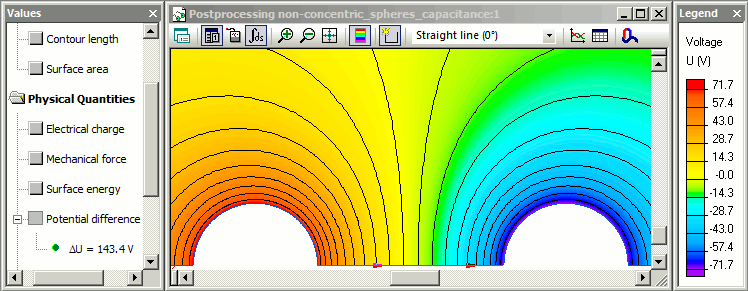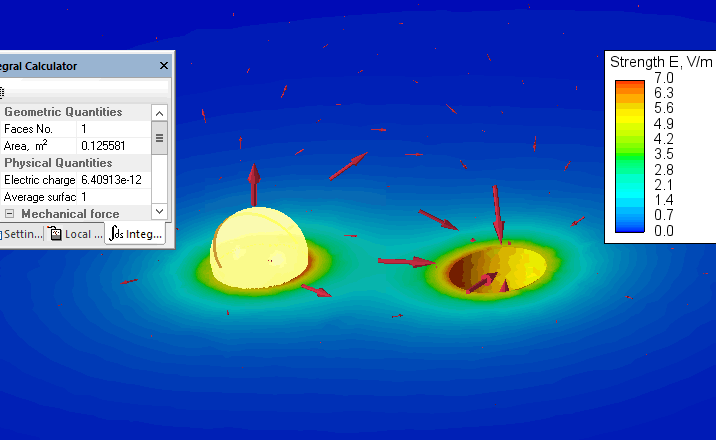Non-concentric spheres capacitance
QuickField simulation example
Problem Type
Axisymmetric problem of electrostatics.
Geometry
a = 100 mm, d = 500 mm.
Given
Relative permittivity of air ε = 1,
The charge q = 10-9 C
Task
Find the mutual capacitance between two spheres and compare its value with analytical solution:
C = 2π·ε·ε0 · a  [F] *,
[F] *,
where D = d/ (2a).
Solution
Sphere's surfaces are marked as 'floating conductor', i.e. isolated conductors with unknown potential. At some point on each of sphere's surface the charge is applied. The charge is then redistributed along the conductor surface automatically.
Results
Potential distribution around spheres.
The capacitance can be calculated as C = q / (U2 - U1). The measured potential difference is U2 - U1 = 143.4 V.
The capacitance is C = 10-9 / 143.4 = 6.97·10-12 F.

Electric field stress distribution around spheres.
The capacitance can be calculated as C = q / (U2 - U1) = 6.4e-12 / 1 = 6.4 pF.

| QuickField | Theoretical result | ||
|---|---|---|---|
| 2D | 3D | ||
| C, pF | 6.97 | 6.40 | 6.99 |
Reference: *Wikipedia, Capacitance.
- Video: Non-concentric spheres capacitance. Watch on YouTube.
Two spheres by Richard Ness
- View simulation report in PDF
- Download simulation files (files may be viewed using any QuickField Edition).